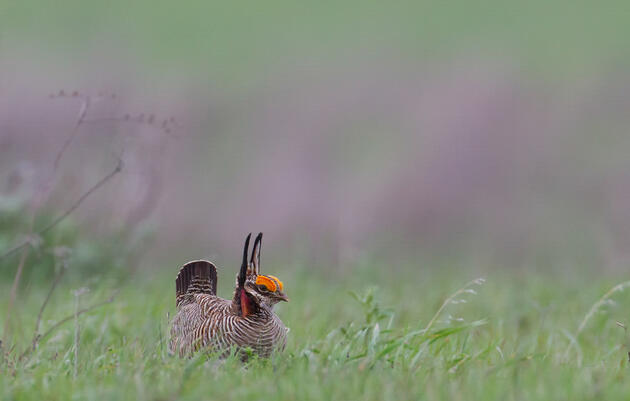The US Fish and Wildlife Service (FWS) is scheduled to announce its final decision on whether to list the Lesser Prairie Chicken as an Endangered Species under the federal Endangered Species Act in June. If FWS chooses to list this species, it would mandate the designation and protection of critical habitat, put criminal penalties in place for harming the bird, and require industry to mitigate any negative impacts they have on the species.
If we have any hope of saving the Lesser Prairie Chicken from extinction, then listing the bird as endangered is essential. While states like New Mexico have worked hard to turn the Lesser Prairie Chicken situation around, unfortunately results matter and, as all ranchers know, you don’t put food on the table with effort. It takes results, and current and past efforts have not delivered them. Since formal nationwide bird monitoring began in the 1960s, Lesser Prairie Chicken populations have declined by 97% across their range. This decline is one of the most precipitous among all bird life in the U.S. and will ultimately lead to extinction if not addressed.
Ensuring the future existence of this bird will come at a cost. In the limited areas where the species remain, they require a wide-open prairie landscape, devoid of vertical structures (e.g. trees, power lines, drilling rigs, etc.), with healthy stands of native grass and forbs. Both fossil fuel and renewable energy production are incompatible with the habitat conditions these birds need. This means these activities will have to be curtailed in the areas designated as “critical habitat” for the bird.
But these costs do not have to be accompanied by conflict. FWS has taken steps to create an Incidental Take Permit that energy companies can apply for allowing them to mitigate their predicted impact by restoring and protecting Lesser Prairie Chicken habitat. With rigorous accounting, FWS and companies can ensure the mitigation is a boon for the bird and a means of providing a predictable regulatory environment for industry. Unlike past programs where funds were used in ways that were not always strategically targeted for the bird, in this program industry funds will be used to protect and restore what the bird needs, most: conservation strongholds. This idea of Conservation Banking could prove to be the path forward that will save the bird while also accommodating the needs of industry.
Local ranchers and landowners must also be supported in their efforts to engage in sustainable grazing practices. Large hooved grazing animals are not the enemy of the chicken. In fact, these birds evolved to live on the prairie alongside another symbol of the West, the American Bison. And while domestic livestock are not a perfect stand in for bison, steps can be taken to create similar habitat conditions through their grazing by rotating cattle through pastures, allowing areas to rest, and reducing stocking rates in times of drought.
An endangered listing for this species would spur a massive federal investment in the condition of this landscape.
Through voluntary grants provided by the US Department of Agriculture, livestock producers will be eligible to receive payments covering the costs of fence improvement, water development, brush removal, and other practices that help their bottom-line while also improving habitat.
Additionally, the National Audubon Society has developed the Audubon Conservation Ranching program, which provides a “bird-friendly” certification for beef products raised in a sustainable fashion. This voluntary program allows producers to charge a premium for their product, creating an additional incentive for co-existence between the bird and the herd.
We need not pit economics vs. the environment in a zero-sum game. There are solutions that can help all sides be a part of the effort to save this bird and make a profit while doing so. We hope FWS makes the right choice for this species by granting endangered species status, creating a mutually-beneficial Incidental Take Permit, and investing in the ranchers and communities in the region. A commitment to collaboration over conflict is the key to ensuring the continued existence of this species on planet earth.




